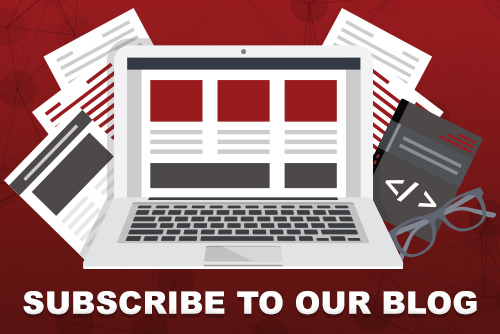Technology works wonders for business, but it also enables other organizations, like law enforcement. We aren’t here to argue ethics, but we would like to touch on some of the technology that certain agencies are using in the execution of their jobs. Specifically, we want to highlight the issues involving the very sophisticated AI and data-mining platforms, such as those developed by Palantir.
Directive Blogs
It’s happening in your office right now. An employee, trying to boost productivity, pastes a chunk of your confidential client list into a public AI tool to draft a marketing email. They see it as a clever shortcut. You should see it as a massive data breach waiting to happen. The explosion of AI tools like ChatGPT is a game-changer, but for unprepared businesses in Oneonta and beyond, it's a dangerous new frontier.
The idea of a four-day workweek (where employees work the same schedule, minus one day a week) has long been campaigned for, with numerous anecdotes supporting its efficacy. One very successful example is provided by the nation of Iceland, which implemented initial trials of reduced work with just under 1 percent of its population, or about 2,500 people, back in 2015.
These efforts have increased over the years, and today, almost 90% of Icelandic workers work 36 hours per week with no negative ramifications to the economy. In fact, Iceland’s society has enjoyed significant benefits during this experiment.
The end of Windows 10 support is closer than you think. On October 14, 2025, Microsoft will officially stop providing free security updates, non-security updates, and assisted support for Windows 10. For businesses, this isn't just a minor inconvenience—it's a critical security and operational risk that demands immediate attention.
The CIO or Chief Information Officer of any organization has a lot of pressure on them to get their organization’s technology right. Not only do they need to put strategies in place that will help the organization prosper; they need to take the brunt of the heat when these IT initiatives don’t work out in the way they forecast them to. A lot of their job is to say yes when their best instinct is to say no. Today, we will look at three of the technologies that today’s CIOs are green-lighting.
Tuesday, October 14, 2025. That’s the day that Windows 10 will no longer be supported by Microsoft, which means you need to ensure your business has updated its devices to Windows 11 before then. This is a critical process, as failing to do so will expose your business to severe cyberthreats and regulatory shortcomings.
In addition to these issues, Microsoft has announced that support for Microsoft 365 will also end for Windows 10. For many businesses, likely including yours, this should only serve as more motivation to prioritize this migration to the more recent OS.
There are a few occasions that we get a very apparent example of how important basic cybersecurity is, regardless of where you are, and this year’s National Football League draft is one such example.
For those who don’t follow the NFL or the draft proceedings, multiple draftees received prank calls during the process, although one in particular is applicable to businesses of all kinds. Let’s examine this situation to reinforce a few critical cybersecurity best practices.
Technology is the engine driving success in our community. From managing daily operations to engaging customers, reliable IT is no longer optional. Keeping that engine finely tuned—ensuring hardware, software, and networks are always up-to-date—presents a significant challenge. Technology evolves at lightning speeds, and managing it can feel like a constant, resource-draining battle, pulling you away from focusing on your core business.
Is your current IT setup empowering your growth, or is it quietly creating risks that could derail your progress? Many businesses operate with technology that feels "good enough," unaware of the hidden dangers lurking beneath the surface.
In the United States, tax season is prime time for hackers to take advantage of law-abiding, tax-paying citizens. They do this through all kinds of nefarious activities, such as phishing attacks conducted through text messages and emails claiming to be from the Internal Revenue Service. If you want to avoid getting scammed this tax season, be sure to keep the following tips in mind to stay safe while you conduct your typical tax routines.
Despite some of the headlines that we saw last year, it wasn’t all bad news regarding ransomware. Critically, 2024 saw ransomware payments plummet by hundreds of millions of dollars… despite many large-scale attacks and one record-breaking whaling payment of $75 million by one victim.
This is undeniably great to hear… but with that in mind, we cannot let ourselves slip into complacency.
Text messages are great. They’re a quick and effective means for us all to communicate.
Unfortunately, this does bring some downsides, too… namely, they’re a relatively simple means for a scammer to spread their attacks. Let’s discuss why this is so dangerous and how you can identify and avoid these threats.
Happy Valentine’s Day! Today is a day to celebrate love, romance, and every butterfly that has ever fluttered in a stomach. However, the greatest loves can bring the greatest sorrow… particularly when the time comes to say goodbye.
Take Windows 10, for instance. PC users have loved the OS for a decade, but in a few short months, it will no longer be a good relationship for anyone—particularly business users—to maintain.
Net neutrality has long been an embattled topic, with rules flipping every few years depending on the opinions of those with influence. Recently, the Federal Communications Commission had its most recent net neutrality policy struck down by the 6th Circuit Court of Appeals… in such a way that sets the concept back to square one.
Let’s discuss why this is a particularly dangerous decision, and very well could put small and medium-sized businesses at a distinct disadvantage moving forward.
With the price of hardware at risk of skyrocketing, it’s no wonder that many businesses are looking to virtualize as much of their operations as they can. This is where the cloud comes in; you can virtualize just about any solution, including some that you might not have considered in the past. Let’s explore how an SMB might use virtualization and cloud computing to skirt hardware acquisition costs.
As a provider of information technology services and support, a big part of our job is helping the businesses we work with make the best decisions regarding their critical IT. This responsibility means we often provide an advisory role to business leaders.
In that role, we strongly advise that you make any intended technology purchases and upgrades right now… because if you wait, you may have no good options left.
Artificial intelligence is the latest IT buzzword that everyone seems to focus on and it’s because it is a big deal. Advances in computing have created an environment where developers can create software that effectively learns. Unfortunately, due to the nature of AI regulation; or, the complete lack of it, there are some who are concerned that the technology—which could be a revolutionary tool for the improvement of human societies—is being degraded.
Last week, we discussed why X—the social media network once known as Twitter—has been losing many users. Here, we wanted to direct those seeking a move to consider the up-and-coming platform known as Bluesky in case you were one of those jumping ship.
Let’s talk about how Bluesky operates, including how to sign up.
The Disney brand has long cultivated an image of magic and wonder. However, this image has yet to materialize any magical effects in reality. For example, people still suffer from food allergies while visiting Disney’s various parks.
This makes it especially dangerous that a former Disney employee was allegedly still able to access a specialized menu-planning app and make alterations, like changing prices, adding language that Disney certainly would not approve of, switching text to the unintelligible “Wingdings” font, and worst of all… changing menu information.
Can you tell the difference between your colleagues and a scammer with access to their email account? This is essentially what a business email compromise attack involves—a scammer initiates a phishing scheme using an internal mode of communication. These scams are also observed in schools, making them dangerous in the education sector.
In June of this year, publisher Chicken Soup for the Soul Entertainment, best known for its book series of the same name, filed for Chapter 7 and Chapter 11 bankruptcy and had many of its assets liquidated. One of these assets was the movie rental service Redbox and its eponymous scarlet rental kiosks, rendering the service defunct.
However, many kiosks remain standing outside businesses even now, which makes us wonder… what about all the data they collected while they were in use?
It isn’t rare for people to subscribe to things and only stay subscribed because the cancellation process is so challenging and inconvenient. However, the Federal Trade Commission is looking to stop this, adopting a rule that eliminates the capability for businesses to put hurdles in front of cancellation processes.
You might remember the buzz when Josh Allen, a digital artist, won first place at the 2022 Colorado State Fair for his digital artwork called "Théâtre D'opéra Spatial." The catch? He created the image using AI. Now, he’s in a fight with the Copyright Office to prove that his work deserves copyright protection.
Over the past few years, huge scamming operations have operated in Southeast Asia, and now they are spreading. These scams—known as pig butchering scams—cause serious harm, as in an estimated $75 billion worldwide in 2023.
With these sorts of operations spreading, let’s go over what pig butchering is.
Funerals are never to be taken lightly, which makes it all the worse that there are people out there willing to use these events to scam those in grief. Recently, Facebook has seen many groups that supposedly offer links to streamed funerals in exchange for credit card data, with different events being added more recently.
Sextortion scams are scary. The scammer contacts the victim, claiming to have gotten access to their computer and captured video footage of their target partaking in some private and decidedly adult activities, as well as the content that was onscreen at the time. The threat: pay up, or I send the footage to all of your contacts.
Lately, however, hackers have added another layer of “proof” to these claims, now referring to victims by name and including pictures of their homes. Let’s walk through what one of these scams looks like and what you should do if one appears in your inbox.
Sorry for the loaded title. There’s a lot to talk about, even for those of you who don’t use or even know what Telegram is.
We’ll try to sum this up, because we think there is a lot to say about security and the nature of technology in this, and like all things these days, there’s some odd rabble-rousing about this whole series of events. Who’s up for a wild ride?
Nowadays, finding a business that does not use technology in its everyday processes would be extremely challenging. That’s just how things are today. This technology also typically sees advances in capabilities and accessibility, particularly for the small and medium-sized business sectors. This year, 2024, seems poised to be no exception.
On Wednesday, April 10, 2024, Apple deemed it necessary to send a rare alert to certain users via email, spread out across 92 nations. As Apple’s website states, these threat notifications “are designed to inform and assist users who may have been individually targeted by mercenary spyware attacks.” Let’s review these attacks so we all understand this threat better.
One of the best things about the move towards streaming in media is that since people love watching real-life stories, studios have committed to creating documentary content that provides interesting perspectives. Many people don’t have a comprehensive understanding of technology, especially as it relates to real-world situations, so dramatized documentaries can be a good source of information. Today, we’re going to go through three riveting technology documentaries that are available on streaming services.
The constant fear of falling victim to scams has become a harsh reality and is far from ideal. However, the good news is that there is always time to acquire the skills needed to avoid such scams. Let's explore ways to enhance awareness regarding the challenges posed by scams, not only in a business context but also in everyday life.
With the end of the year upon us, New York State’s health insurance markets and assorted health plans are open. Current enrollees received renewal reminders a few weeks ago, prompting them to act before their coverage lapses.
Unfortunately, as is often the case in such situations, this urgency has given scammers the opportunity to target New Yorkers trying to maintain their insurance coverage.
One major nonprofit has become the victim of a disclosed major data breach, affecting 890 schools all across the US: the National Student Clearinghouse, or NSC. The organization has announced that they have experienced a considerable data breach that has put their clients’ data at risk. What does this mean for affected organizations and their clientele?
Artificial intelligence is a hot-button issue in today’s business technology landscape, and for good reason. It’s being implemented in various software tools and platforms with mixed results. There are some concerns over it, particularly in regard to intellectual property, but there are also major issues with it related to “the profound risks to society and humanity,” according to an open letter.
It seems that you can’t turn your head nowadays without seeing artificial intelligence being incorporated into some software or platform. However, many leaders in the technology space have expressed their concerns about—as they put it—the “profound risks to society and humanity” that AI poses, outlined in an open letter.
This is a true story, and a perfect lesson on how cybercrime and scammers use your emotions against you to get you to fall for their tricks. I think it’s also a lesson on just how helpless a victim of a scammer can become, as well as how immune the bad guys are while performing these horrible acts on people.
Google's Project Zero, a team of security analysts employed by Google who are tasked with finding zero-day vulnerabilities, has found critical security flaws in Samsung modems (used in smartphones and other communication devices). This flaw could enable hackers to remotely gain access to vulnerable devices without any intervention from you, the user.
For many years now, there’s been a bit of a fear of AI—artificial intelligence—in the workplace, all while it has been put into practical use more and more often in many businesses. This all ties back to the work of Alan Turing, who (amongst his accomplishments in computing) created what we know as the Turing Test as a means of gauging how intelligent a computer is.
Have you ever heard of the Uncanny Valley? It’s the theory that explains why the human race tends to prefer humanoid robots, but only up to a point, after which we find them unsettling. It’s one reason why so many people found the 2019 film Cats bothersome to watch. The Uncanny Valley has also been present in film in recent years, especially when actors who have passed are recreated digitally to make an appearance, or when talent needs to look older or younger than they are.
There’s no denying that the economic forecast at the moment is a bit bleak, with murmurings of a recession growing louder by the day. As this situation develops, many companies are likely seeking out opportunities to trim the fat. Despite this, however, we anticipate that artificial intelligence will actually see a bit of an uptick. Let’s go over why.
No matter how big your business is, you’ll always have technology expenses. It’s just a fact of the current workplace, and your profits will be inexorably tied to how well your IT works for you. Furthermore, the more IT costs rise, the more impact small and medium-sized businesses will feel from them. Today, we wanted to address this issue and how you can minimize the frustrations that stem from seemingly uncontrollable technology costs.
It is a legitimate question whether something is actually art if it isn’t created by a human being. That’s before you are exposed to it, however. In fact, an AI created a piece of art that was crowned the winner at the Colorado State Fair. Let’s take a look at AI art in the context of this competition.
While we typically focus on how various technologies can be used in business applications as a way to boost a small or medium-sized organization’s capabilities, we occasionally come across a topic that is just undeniably cool (and that we can bring back around to business concerns, to boot). We recently heard about the development of a flexible new wearable that uses AI to monitor the health of the wearer that we wanted to discuss with you.
The average person will spend an estimated one-third of their life at work. One third. That’s a lot of time, providing plenty of opportunity to accumulate stress. Over time, these emotions could potentially overwhelm your employees and lead to a breakdown. This is, naturally, harmful to your business, so let’s explore some strategies you can share with your team to help them deal with their workday stresses.
With inflation proving to be a significant concern for businesses at the moment, reaching highs that it hasn’t in decades, there is a distinct need for businesses to get as much value as they can out of the investments they make.
Let’s discuss a few technologies that offer this more desirable cost/benefit ratio so you can consider them for your own use.
We’re all aware of the outage that Facebook experienced a few weeks before it announced its Meta rebrand, which prevented users around the world from accessing the services that the social media giant provides. While it may not sound like a huge deal that people couldn’t share their thoughts with one another for a short time, the ramifications stretched far beyond the inability to scroll through a Newsfeed.
Almost daily there is another data breach reported that exposes data for hundreds of thousands or millions of people. This is a troubling trend. One of the most troubling events happened recently as 700 million profiles from the social media network LinkedIn were found for sale on a popular hackers forum. What’s worse is that the company isn’t admitting that it had been breached recently. Let’s take a brief look at this situation and try to unpack what is going on with LinkedIn.
With such a heavy focus on remote work over the past year or so, if you have tried to procure equipment or technology solutions during this period, you may have noticed that it is much harder than usual to do so. The global chip shortage has led to many challenges for organizations, chief among them getting the parts needed to put together critical technology solutions. This opens up a whole other set of issues, though, particularly in regards to disruption of the supply chain.
You’ve probably heard by now, a Russia-based hacking collective by the name of DarkSide targeted Colonial Pipeline, a company that supplies nearly 45 percent of the fuel used along the Eastern Seaboard of the United States, with a ransomware attack. Not only does this hack have an effect on fuel prices and availability, it highlights just how vulnerable much of the nation’s energy infrastructure is. Let’s discuss the details of the hack and the raging discussion about cybersecurity that’s happening as a result.
We've been blogging a bit about ways to prepare for laptop theft and what to do if a company laptop is actually stolen. Laptop and mobile device theft is a widespread issue for businesses and can lead to data theft which can be extremely costly; much more than the mere price of the hardware. This issue is all too familiar with NASA, which admits that thousands of mobile device theft incidents have occurred over the past few years.
 2015 was a brutal year for major corporations, as one by one they fell victim to hacking attacks. Major organizations like Blue Cross Blue Shield, Anthem, and even the United States Office of Personnel became victims of major hacking campaigns. A fact that’s often lost amongst these details is that not all hackers use their skill for evil actions, even if they are still illegal.
2015 was a brutal year for major corporations, as one by one they fell victim to hacking attacks. Major organizations like Blue Cross Blue Shield, Anthem, and even the United States Office of Personnel became victims of major hacking campaigns. A fact that’s often lost amongst these details is that not all hackers use their skill for evil actions, even if they are still illegal.
 You're likely familiar with the various ways that hackers can steal your identity, but you may not be familiar with how hackers anonymously buy and sell people's personal information to interested parties. This is done through online ID theft services and a December hearing before the U.S. Senate highlights how one service was selling personal records on more than 200 million Americans!
You're likely familiar with the various ways that hackers can steal your identity, but you may not be familiar with how hackers anonymously buy and sell people's personal information to interested parties. This is done through online ID theft services and a December hearing before the U.S. Senate highlights how one service was selling personal records on more than 200 million Americans!
 The expiration date for Google Reader is set for July 1, 2013. Google’s decision to axe the Reader was not because it was unpopular, but rather, it seems like Google wants to focus their energy into fewer products. This announcement leaves many Google faithful out in the cold, and Feedly has welcomed the Google huddled masses yearning to read free.
The expiration date for Google Reader is set for July 1, 2013. Google’s decision to axe the Reader was not because it was unpopular, but rather, it seems like Google wants to focus their energy into fewer products. This announcement leaves many Google faithful out in the cold, and Feedly has welcomed the Google huddled masses yearning to read free.




